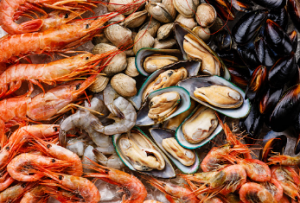While buying frozen seafood, there are certain things you should look for. Firstly, you should check the packaging. If it is damaged, this means that there has been rough handling. It may also have air trapped in it, so the seafood needs to be properly packed. Another thing to look out for is odour. It is a sign of poor quality and should not be purchased.
 Flavour
Flavour
Shore Mariner NZ frozen seafood contains all of the nutrients of fresh seafood. In addition, it means that it will retain its flavour and texture. Although purchasing locally grown seafood is still best, frozen seafood is convenient. Therefore, frozen seafood is a great option if you are looking for a quick meal. However, it may not be easy to find the best quality seafood.
One benefit of frozen seafood is that you can buy it in any portion size. You can also cook it in the way you like. In addition, some species of fish have a short season, but they can still be found frozen. It allows consumers to enjoy these fish all year long. Finally, frozen seafood is processed using sophisticated equipment to lock in flavour and texture.
Texture
The texture of frozen seafood is a critical food quality attribute that several factors can influence. In this study, we used sensory panels to evaluate the texture of catfish fillets in different thawing states and preparation methods. In addition, we compared the textures of individual quick-frozen and cooked catfish fillets with those of fresh-frozen fillets. To achieve these comparisons, we used texture profile analysis to evaluate the texture’s qualitative and quantitative aspects.
A good way to judge the texture of frozen seafood is by looking for raised edges and ice crystals between muscle segments. If the ice crystals are visible, the seafood has been frozen slowly and correctly. If they are not, then it is likely that the food was thawed and refrozen. It will affect the flavour and texture of the seafood.
Generally, Shore Mariner NZ frozen seafood is coated with ice to protect it from oxidation and dehydration. However, if the wrappings have excessive ice crystals, it may indicate moisture loss and flavour.
Price
As the demand for seafood increases, the prices of fresh and frozen varieties have become more expensive. During the last two years, new seafood prices have increased by more than six per cent, while frozen seafood prices have increased by just under four per cent. In addition, the price of canned seafood has increased by more than five per cent.
In North America, frozen seafood has become a popular food. More than 50% of consumers prefer frozen seafood products, which generate more than 30% of market revenues. Asia-Pacific, meanwhile, has seen a 5.5% increase in the consumption of frozen seafood products. This region also consumes a high proportion of fish-based oils and canned goods.
Availability
A growing number of consumers recognise the benefits of frozen seafood in their diets. Frozen fish, for example, is easier to transport and has a longer shelf life than fresh fish. As a result, it makes the frozen fish and seafood market more profitable. Frozen seafood also retains its freshness, flavour, and nutritional value.
Frozen fish is available year-round and is cheaper than fresh fish. The low price of frozen seafood allows people to purchase it throughout the year without compromising quality and nutrition. As a result, many consumers have turned to frozen food for convenience and affordability. The availability of a diverse range of seafood has also increased demand.
Freshness
Frozen product quality varies greatly. Frozen seafood is often packaged using plastic-based packaging or a paper-based outer carton. Different types of packaging material may be used depending on the species and the amount of processing. For example, frozen meat and fish are packaged in plastic-based materials, while crustaceans, molluscs, and other seafood are packed in thicker gauges.
Frozen seafood should be stored at a low temperature. Frozen fish should not be allowed to exceed -18degC. Generally, frozen fish should be stored in a refrigerator for two days or less. After that, it should be kept in the freezer. If the fish is not cooked, it should be refrozen before consuming it.
Frozen seafood should not be thawed or microwaved, as it will lose its freshness and flavour due to storage. The thawing and freezing process can cause the texture of the fish to change dramatically. These changes can vary widely depending on the species, but the main changes include dryness and stringiness. Moreover, the odour and flavour will also change. Lean fish have more pronounced flavours and aromas, while fish high in oil tend to develop rancid odours. It can also occur with crustacean shellfish.